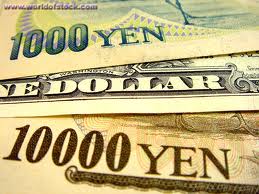Here’s today’s ‘Just A Minute’ bringing you a 60 second summary of what’s happening in the financial markets:
Main Trading Event Of The Day: U.S. Non-Farm Payrolls @ 12.30 GMT
WHAT WE’RE WATCHING TODAY
Dollar Headed for Best Week Versus Yen Since April Before Payrolls
The dollar headed for its biggest weekly gain since April versus the yen ahead of today’s U.S. Non-Farm Payrolls report which is expected to show that employers added more than 200,000 jobs for a fourth month as the labour market recovers. The euro was little changed today after jumping the most since March versus the dollar yesterday as the market rejected the European Central Bank’s unprecedented effort to weaken the single currency. The dollar was little changed at 102.34 yen having gained 0.6 percent this week, the most since the period ended April 18. The euro traded at $1.3657 after jumping 0.5 percent yesterday, the most since March 6. The Euro was little changed at 139.75 yen.
Meanwhile, the Dow and the S&P 500 ended at a new record on Thursday after the European Central Bank cut rates to record lows and pledged to do more if needed to fight off the risk of deflation. Investors are now focused on today’s U.S. payrolls report for May. It is expected to show job growth slowed last month and the unemployment rate ticked up, but not by enough to upset the view that the economy is bouncing back. The number of Americans filing new claims for unemployment benefits rose last week, but the underlying trend continued to point to a firming labor market.
Draghi Fights Deflation With Banks Rather Than Bonds
The banking system rather than the bond market is Marion Draghi’s chosen route as his best ally, for now at least, in the fight against deflation. The European Central Bank yesterday cut interest rates to unprecedented lows and its president unveiled measures to beef up lending for banks in a bid to revive inflation hovering close to a quarter of his target. With much hinging on whether banks will boost credit themselves, failure to spur consumer prices will leave Draghi with little option but to enter the uncharted terrain of U.S.-style bond buying. Some executives have more hope than confidence that Draghi’s current plan will work. The negative deposit rate is aimed at stemming unwarranted increases in money-market rates and weakening the euro, yet could backfire if banks retrench further or pass the cost on to customers. A risk of the new lending venture is that banks may pass on the money only to find companies can’t repay it which may mean that Draghi ultimately has no choice but to engage fully with QE.
Higher Coffee Prices Hit Consumers
The moment to hoard cheap coffee beans has passed. The price of coffee futures peaked in April and the higher commodity costs are now hitting consumers at the supermarkets. Coffee prices spiked after drought hit the crop in Brazil, the world’s largest grower, even though rains have recently eased some of the damage. Changes in the futures market don’t tend to show up in retail prices for months. In February, Arabica futures rallied by more than 20 percent to start the year. After reaching a high of $2.12 per pound in April, coffee futures prices have since cooled somewhat so there’s hope yet that retail prices will fall again, in time.
That sums up today’s highlights! We hope you have a profitable day on the markets.



